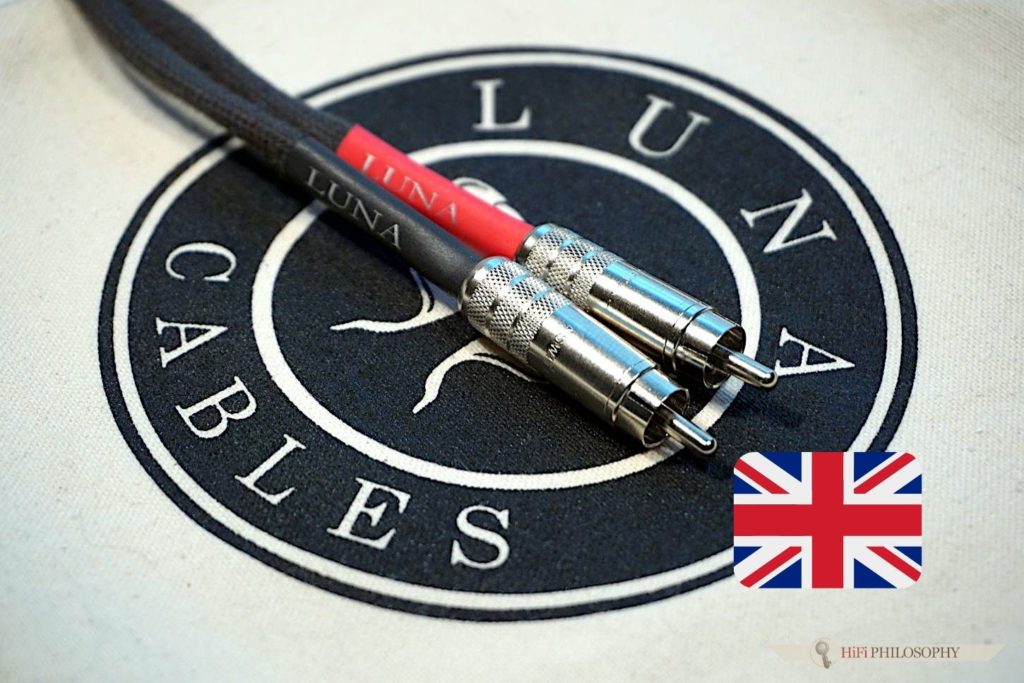 The hunt is still on, the optimal sound is still elusive. Of course, the easiest way is to lure it with gold, but a sack of gold can be just as elusive. And when the sack is not too heavy, or the allowance for audio equipment is not too big, then it gets even more complicated. On the one hand, there is plenty of cheap equipment in every department, but how to find the right one? Well, that’s what reviewers are for, and that’s why they shouldn’t test whatever gets into their hands, or waste time criticizing things that are simply unsatisfactory. Because even without it, choosing the perfect optimum for a given equipment configuration among many rivals is quite a challenge. Which headphones will be best for me in a given price range? Which USB cable will be good enough? Is it worth buying a tube amplifier? – Such questions come back like a flock of birds to a freshly sowed field, and the best one can do is to test things that are universal and optimal by definition, or simply good. Good in general, with a good quality to price ratio. Possibly the best.
The hunt is still on, the optimal sound is still elusive. Of course, the easiest way is to lure it with gold, but a sack of gold can be just as elusive. And when the sack is not too heavy, or the allowance for audio equipment is not too big, then it gets even more complicated. On the one hand, there is plenty of cheap equipment in every department, but how to find the right one? Well, that’s what reviewers are for, and that’s why they shouldn’t test whatever gets into their hands, or waste time criticizing things that are simply unsatisfactory. Because even without it, choosing the perfect optimum for a given equipment configuration among many rivals is quite a challenge. Which headphones will be best for me in a given price range? Which USB cable will be good enough? Is it worth buying a tube amplifier? – Such questions come back like a flock of birds to a freshly sowed field, and the best one can do is to test things that are universal and optimal by definition, or simply good. Good in general, with a good quality to price ratio. Possibly the best.Now, once we’ve got the picture, it’s time for specifics. Both are defined in the title – it’s about an interconnect and about Luna Cables. It worth adding that it’s about their cheapest interconnect, because an IC that is both good and cheap is quite a thing.
Luna Cables is not completely unfamiliar on our market, because it’s had a distributor for a year now. The distributor’s saying that it took some effort to find them, but it was worth it. He was importing cables from all over the world, looking for a good brand, with emphasis placed on quality and economy. And from what he says, it was a tough job: he received various cables, but he was forced to send them all back. He was close to giving up, he was loosing hope, and then came Luna Cables…and bang! – suddenly everything’s changed!
Luna Cables is a small Canadian company, located in the suburban area of Quebeck. It takes pride in the fact that its workshop is a renovated 19-th century barn, and the produced cables refer to really old ones. Not as old as the barn itself, because among long and flexible things back ten you could find only a horse harness or ropes for cattle or pigs, nevertheless, first half of the 20th century-old, and this is ante pretiosa interconect epoch. It’s worth mentioning that such cables have their faithful group of fans, and the famous Western Electic’s also became famous for such cables. I have to admit that I’ve never dealt with such vintage cables, nevertheless, cable-specializing companies base their products on vintage copper, even though not all of them admit it. Luna Cables does admit it – and in general, it’s all trendy. As far as possible, they use only natural resources, and ecology is highly valued by them – their products have cotton sleeves and cotton bags – advanced recycling. What’s missing is cables that would only transmit power from renewable sources, but such are yet to be invented. Doesn’t this obsession with ecology sound familiar? Well, you might know it from the Swedish Entreq, also located in a rural area, and its owner has a convenient enterprise – a sawmill, and their mailbox is on a bus stop in the middle of nowhere. And so what? And their village-originating cables are so good that their big-city rivals look at them with envy. It’s because the audiophile world has a surprising ability of mixing latest technology with old one. Inside a converter, there are state-of-the-art chips of programmable integrated circuits, and right next to them you can find a braid of vintage copper in a cotton sleeve and half-century old lamps.
But this makes me say, with a hint of annoyance: here we go again. Because obviously, there are no exceptions, every manufacturer of audio equipment and every reviewer madly loves music and can’t imagine life without it. Which distinguishes them from Descartes, for instance, considered to be the father of modern philosophy, who, being a philosopher, disliked philosophy and believed one shouldn’t devote it more than a few hours a week, because it dissipates the soul and takes away one’s will to live. The will itself was defied by Schopenhauer, who argued it was moody and mean. But perhaps this is exactly why music is so appealing – because it allows you to forget about philosophy (in whichever sense) and please your moody will at least for a while? This is why people want it so much, because it is soothing their worries, sadness, helplessness and anxiety. And replacing them with primal instincts and passion. Besides, music connects people and can help overcome the feeling of loneliness. And so again, when you get to know Luna Cables team, you learn about love for music, this time with Danny Labrecque and Erik Fortier. The former is the head constructor and since childhood, he’s been playing violin, whereas the latter deals with everything else in the company, and since mid 90s, he’s been working in the best audio lounges, becoming familiar with the whole audio equipment world. Even though nowadays two gentlemen can be considered a couple, enthusiastically welcomed by “modernity”, here modernity goes even further and there are even some feminist aspects. So, to stop feminists from yelling, as they usually do, madam Rowan Smith joined Luna Cables team, and is dealing with its online affairs, finances, and offers whatever help she can. But let’s move silly suspicions aside – Rowan is a long-time partner of Danny Labrecque, now also in business.
What else is there to say about Luna Cables? The company, even though it’s not big, offers as many as five cable lines, of which Gris is the cheapest. The most pricy Black line is several times as expensive as Gris, and in the middle there are Orange, Mauve and Red lines. Apart from interconnects, their offer includes all audiophile cables: speaker, digital, power, gramophone and jumpers, and in the Orange line, there’s also a step-up transformer with two separate hi/low switches and one mono/stereo switch. When it comes to the name, it’s not taken from the moon, but it derives from the Luna Moth – a North America moth which is the symbol of the company.
The construction of the gray eminence
This time “cheap” is supposed to also mean “unique” by design, that is – cheap like pricy. Or even – like expensive. This is where we’ve started and this is where we are now, according to the promise of the distributor and what he’d swear blind. Hence the term “eminence” and such panoply introduction. And now we will take a look: what – what of – and how.
The cable looks unobtrusive, and its price for one meter is a modest PLN 1,2 k. In accordance with the ecologic spirit of the manufacturer, it comes in a cloth bag with a printed moth motif. The bag is closed with a very unecological plastic zipper, so an ecology bigot might get offended, but who knows? Maybe the plastic is special and ecological too? Anyway, the cable has gray cotton sleeve and simple stiffener bands at the plugs. The bands are red on the right cable and black on the left one – so there is no need to play the game “strain your eyes and try to figure out how the manufacturer’s marked the sides and directionality. The sides are easily visible with the use of traditional colors, whereas directionality is marked with LUNA inscriptions on the stiffeners. On the outside, you can also see silvery RCA plugs made by the leading American manufacturer, Switchcraft Inc. What distinguishes them is the possibility to disassemble them and see how they connect with the cables on the inside – and the connection is solid, otherwise the sound would be poor.
You can see in the pictures that the cables are rather thin, and feel flattish to the touch. They bend easily, but are also somewhat elastic and have some rigidity. They are not fluid nor particularly stiff, not too light and not too heavy. Based on organoleptic evaluation, you’d say the cable is not too expensive and not for those who care about sound quality too much, or perhaps for those with a tight budget. Just a simple cable for simple people or just any cable for non-audiophiles. Or perhaps for some audiophiles, but inhibited to the utmost, whose motto is: “anything but the cheapest or free.”
About the conductor, there’s no secrecy, we get a handful of information. The key piece of information is that we’re dealing with Luna Cables Neo-Vintage (LCNV) tinned copper, therefore not artificially aged with current, but authentically old tinned copper. Not brass or gunmetal, but copper with a small proportion (below 1%) of tin – a conductor that’s been used for ages and is still used in high-tech products, such as ultrafast trains, for example. Luna specifies braid thickness and number of cores in the Gris line only for the power cable, in this case, there are 16 wires, 26 strands each. Surely, the IC has less, but how many exactly, I won’t guess. Each core has a waxed silk coat and the whole is put in this overwhelmingly gray cotton, whereas the secret of its quality stems from unwavering, longtime auditioning by Danny, and from his rich, comparative experience with other cables. It should sound better than even very good cables – otherwise there’d be no point. In my opinion, the actual underlying cause of the search is that Danny once compared vintage cables with some fancy, expensive ones and could notice that the old ones are better.
Audition
Go ahead, compare them with the best – demanded the distributor. Because these cables are so good that they’ll blow your mind.
And I did compare them, even though I didn’t believe there’d be any mind-blowing. Probably just another decent cable for a fair price. I’ve reviewed a few such cables, for instance, the marvelous cables from the cheapest line of Harmonix, or the not-reviewed, and much more expensive, but still pretty affordable, Acoustic Zen Matrix Reference in the section of cheap interconnects. After all, even the cheapest Harmonix was more expensive than Luna Gris, with a minor obstacle that it’s no longer produced. Perhaps it was too good. I’m sure there’s some story about lack of materials behind it – perhaps it’s even true, after all, the owner is not some shyster, but a Shintoist focused on experiencing the world to the full – anyway, you won’t get these cables anymore, unless you can find some leftovers somewhere. Another very good cable is the cheapest Entreq, but here we have a totally different price, because it costs well over four times as much as Luna. And the awesome Oyaide AZ-910 made of crystal silver also costs almost three times more…And interconnects, similarly to power cables, have this property that you’ll quickly find out you need more than just one in your audio chain, making the price issue even more important, but, God forbid, at the cost of quality. Therefore an excellent price/quality ratio – this would be a blessing. This is what’s been promised and this’s what I’m about to discuss now. It is there, for sure, but let me explain the details.
The cable came with playback time zero, so Karol took it for some warm-up. Once he was done with it, I had to ask him about the results – he replied shortly: “it’s not a cable for fools, but one with music.” If that’s so, it should be compared against some other cable with music, so that its musicality can be evaluated. It all started with a computer, because nowadays it’s a must. Already the fact that one interconnect usually suffices, and sometimes it’s even possible to do without any, is a measure of success. Anyways, who’d leave their computer to listen to some music? Sure, I’m exaggerating, but there’s something to it. Young people reluctantly leave their computers, and good sound quality is demanded not just for music. Off we go then – from the computer throught iOne converter over a coaxial for 48 hundreds, to the transducer for 13 thousands, connected with Luna Gris for 12 hundreds, with headphone amplifier for twenty some thousands and headphones for eleven thousands. And Sulek IC for comparison, with excellent musicality, but costing six thousands. It is also heavier and thicker and has copper forged plugs. I’ve grown used to the fact that hardly anything can match it when it comes to musicality and cables for dozen thousands sometimes were heavily defeated by it. But the comparison was supposed to be though – so why not? Here we go.
First, I listened to Sulek, and it was an extremely pleasant experience. It’s because I’ve figured out the flagship ALO amp and I know how to indulge it. But I’ll talk about it in its review, now back to the interconnects. Something like this has never happened before – after switching to Luna Gris, at first I couldn’t hear any difference. At the time I was listening to some popular vocal music, naturally focused on mid-range, and nothing happened there. In a blind test, if I haven’t switched the cables myself, I would say: it’s the same audio chain. It felt the same in the case of calm, only slightly contrastive electronic music played right after. And it was only with songs exhibiting extreme ranges that it could be noticed that Sulek is able to go higher, as well as lower. The latter was even more noticeable and emphasized further by the Ultrasone with heavy bass. But emphasizing is one thing and the scale is another thing. In any case, it cannot be said that Luna Gris has lean bass. It is rather normal in this aspect, if for normal we take the standards of the best interconnects in the price range between two and ten thousands zlotys. For example, when it comes to bass, Luna is better than the otherwise great Entreq Discover, which is much more expensive. With Luna, perhaps the bass wasn’t seismic and missed the lowest subwoofer ranges, but nevertheless, it was able to produce a nice “boom!” Because the extreme low-range was missing, the bass was somewhat lighter and as a result, the midrange also lacked a clearly-defined bass edge, especially in some songs, but please note that first I had to notice it in the low-range, and then go back to mid-range to observe it. This clearly shows how little has changed with the change of cables, and how good Luna Gris is. Because, let me remind you – it’s happened that Sulek embarrassed cables costing over ten thousands dollars or euros. And here, nothing much happened, even though naturally, Sulek displayed extremes and mid-range better.
But Luna Gris also had something to say in this battle, offering more nice, non-obtrusive light that soaked deep into music. It was slightly narrower, it lacked some delicacy and fluidity, but when it comes to musical elegance and ease of combining phrases, there’s absolutely nothing to complain about, including the fact that at first, it was indistinguishable from its five-times more expensive opponent. And the longer I’ve been listening, going through more and more songs, the differences became more noticeable to me, but it also made me appreciate Luna more. Its brilliance deeply penetrating the stage was doing excellent work, and the way it could reproduce the authentic structure of sounds – with no hint of colorations and total naturalness – was truly awe-inspiring. Electronic jazz also highlighted the extreme lows of the double bass and saturated tones of the keyboard, accompanied by the clarinet and trumpet on a high-end level. So much for just twelve hundreds? I have no questions. Actually, I do have one: Where have you found this Luna Cables, mister distributor? In Canada? Yea, right – audiophile Canada…
Generally, there was no need to make additional effort and go on with listening, but for the matter’s sake and out of respect for the cable, I’ve done another test, this time in a stationary audio chain. With extremely expensive Zingal columns and a few different headphones – Sennheiser HD 800 with the best Tonalium cable, Final D8000 and Final Sonorous X. In this great company, things were even more favorable for Luna Cables Gris. And this is not what I’ve expected – I thought it would be quite the opposite, that its shortages would become more audible. Meanwhile, it was not the case, and it turned out that in a worse (yeah, right) computer chain, with its denser bass and better saturation, Sulek worked like a healing patch. It is darker than Luna, which is also dark (despite its name) – and with its dense bass, it was correcting the slight, yet audible, tendency of ALO amp to color the highs.
Here, I’ve got to throw in an explaining passage. The distributor was right urging me to compare Luna against the best, but by doing this, he got me into some trouble as a writer. Because now, on every step, I have to begin with describing differences between Luna and Sulek – very slight differences, but by definition, the contrast becomes larger over time. This’s why I have to emphasize the subtlety of these differences. It really required some effort and close listening to notice them. And let me highlight that despite brighter and higher sound, the output produced by Luna Gris was still dark and hundred percent melodic. Slightly different settings, but almost identical image, if I was to compare it to display configuration. And the result is equally great.
To put it short, without omitting anything relevant, the mentioned differences can be described by saying that Sulek has more substance, while Luna has more brilliance. But – let me emphasize this again – we are still on the same level of awesome quality. Both cables performed outstandingly, however, Sulek (as you can imagine) was better in cases where some more substance was needed, where stronger attack and more darkness was needed, whereas Luna Gris was better in cases where more light and air was needed. And because it is the review of Luna Gris, let me say that it did great in every (literally every!) setup, but it performed best paired with Sennheiser HD 800 playing with the super Tonalium cable. Its brightness perfectly penetrated the vast stage, adding more space to it, and its tonal system reproduced sounds with excellent accuracy and naturalness close to the ideal. A bit dark and heavy Tonalium, used as a cable right next to the headphones, was perfectly balanced with Luna’s brilliance and its overall perfection.
And it’s worth adding that Luna Gris is a cable that is totally transparent, totally detailed and absolutely musical. Otherwise, it couldn’t compete with Sulek, and they competed almost like equals. All in all, I’d prefer Sulek and I wouldn’t replace it with Luna, but the fact that differences were so slight was shocking.
Summary
 It needs to be put down, because it is crucial:
It needs to be put down, because it is crucial:
No doubt Luna Cables Gris IC is an interconnect with the best quality to price ratio that I’ve ever had pleasure testing. When put in a thicker and more fancy braid, it could easily cost several thousand zlotys, and no one would complain. And what’s important, it’s a joyful cable. “Not for fools” – as Karol put it; meaning that it simply offers music. But the essence lays in the “simply”, because it is actually very difficult. Interconnects that lack this “simply” would pile into quite a heap, whereas those that possess this quality are sparse.
I won’t describe its individual merits, they will be listed in a bullet-point list below. Let me just write, with utmost satisfaction, that here it is – a cable that is inexpensive, yet like expensive. You won’t impress your friends with its looks, but you’ll be able to brag that you have something special and uncommon when it comes to quality. And those for whom bragging is in bad taste (but let’s admit it, it can be flattering), will have the occasion get a taste of something marvelous – beautiful music. Finally, let me add one more remark: frankly, I’m really pleased that thanks to Luna Cables Gris, an outstanding interconnect is finally affordable. Yes, there were some like that before, but not to such a degree. Definitely not.
Point by point summary:
Pros
- Unparalleled quality to price ratio.
- Total musicality.
- Full detailedness.
- Total emotional engagement.
- Dynamics.
- Rhythm.
- Three-dimensional stage and sound imaging.
- Phenomenally authentic vocals.
- Perfectly penetrating and natural light.
- High-end overall realism.
- Correctly captured tonality.
- No bass or treble coloring.
- Any playback distortions are minimized as a result.
- Easy to fine-tune.
- Vintage copper showing its exceptional advantages.
- Put into use thanks to great hearing of the cable manufacturer.
- Great workmanship.
- No fanciness.
- Or wasting money on redundant things.
- In general, awesome.
- Ryka strongly approved.
- Obvious award candidate.
- Polish distribution.
Cons and reservations
- Modest look.
- Modest packaging.
- Not commonly known manufacturer.
- As much as four lines with better quality.
- Price: PLN 1200 (1 m).
System:
- Sources: PC with Ayon Sigma and CD Ayon CD-T II/Ayon Stratos
- Headphone amplifiers: ALO Audio Studio Six, Ayon HA-3
- Headphones: Final D8000, Final Sonorous X, Sennheiser HD 800 (Tonalium cable), Ultrasone Tribute 7 (Tonalium cable)
- Preamplifier: ASL Twin-Head Mark III
- Power amplifier: Croft Polestar 1
- Columns: Zingali 3.15
- Interconnects: Luna Cables Gris RCA, Sulek IC RCA, Sulek 6×9 RCA.
- Power supply cables: Acoustic Zen Gargantua II, Synergistic Research Current Level 3, Entreq Challanger, Harmonix X-DC350M2R, Sulek Power 9×9.
- Stand: Rogoz Audio 6RP2/BBS.
- Anti-vibration feet: Acoustic Revive RIQ-5010, Avatar Audio Nr1, Divine Acoustics KEPLER, Solid Tech Discs of Silence.
- Power strips: Power Base High End, Sulek Audio.
- Ground box: QAR-S15.
- Cable insulators: Acoustic Revive RCI-3H.









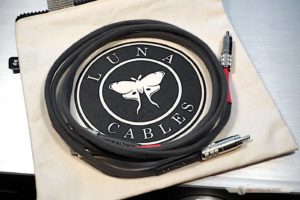
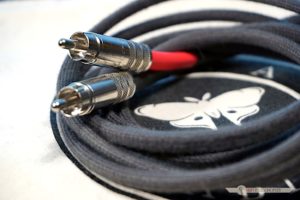

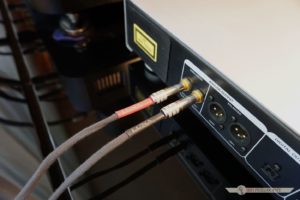
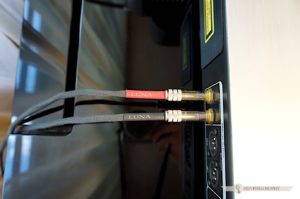


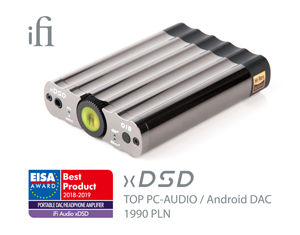


Wciąż są problemy z komentarzami, chociaż informatyk siedzi nad tym od tygodnia. Dlatego zamieszczam komentarz przysłany mi na mail przez niemogącego zamieścić go czytelnika:
Luna Gris ic
Wypożyczyłem, posłuchałem i już został. Wprowadza dawkę organiczności, masy i nasycenia do dźwięku bez utraty przejrzystości. Dużo dobrego dało podłączenie tego kabla do mojego systemu słuchawkowego iFi ( iDAC2 – iTUBE2 – iCAN SE – Meze 99 Classics ). Pierwszorzędna średnica, plastyczność, naturalność, szczegółowość bez nadmiernej analizy. Pełny relaks, spokój, realizm w grze instrumentów bez prądu. Dla mnie to takie nowe tańsze Harmonixy.
Piotr Woźniak